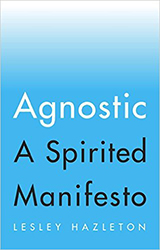The come-on, in a brief item in the New York Times arts section: “A Picasso for $135? There’s a Chance.”
Yeah, sure. I would have ignored the headline except that it ran under a photo of a run-down street somewhere in the Middle East. Tyre, as it turns out.
The $135 is for a raffle ticket, and the raffle is a fund-raising project run by the International Association to Save Tyre. How exactly the intended arts center and research institute could save this war-battered town on the coast of south Lebanon is not at all clear, but the organizers sure know how to get attention. Apparently reckoning that international big spenders wouldn’t know Tyre from Timbuktu, they came up with a splashy prize: a gouache said to be worth a million dollars.
 The most I’ve ever spent on a lottery ticket before is $2. Yet it wasn’t Picasso that made me go here and drop 67.5 times as much. Nor the absurd idea of a million dollars hanging on the wall of my houseboat. In fact much as I admire Picasso (there’s a bronze head of his in the Tate Modern right now that I could stroke all day if they wouldn’t throw me out at first touch), this piece, Man With Opera Hat, doesn’t really do much for me. Perhaps because I’m just not that into men in opera hats (men in fedoras would be something else…).
The most I’ve ever spent on a lottery ticket before is $2. Yet it wasn’t Picasso that made me go here and drop 67.5 times as much. Nor the absurd idea of a million dollars hanging on the wall of my houseboat. In fact much as I admire Picasso (there’s a bronze head of his in the Tate Modern right now that I could stroke all day if they wouldn’t throw me out at first touch), this piece, Man With Opera Hat, doesn’t really do much for me. Perhaps because I’m just not that into men in opera hats (men in fedoras would be something else…).
No, what inspired my extravagance was Tyre itself. Or rather, Tyre’s most infamous princess, Jezebel, who was born when it was at its most splendid, three thousand years ago. The same magnificent Phoenician princess who married the king of a small mountain kingdom called Israel, challenged the fierce prophet Elijah and sent him packing, died one of the most gruesome deaths in a book not known for eschewing grue, and and was branded a harlot for her trouble by the men who wrote the two biblical books of Kings. I wrote a biography of her some years back, and I’m still half in love with her.
Even her sworn enemies, the Hebrew prophets, were half in love with her. Maybe more than half. Here’s Ezekiel delighting in the splendor of her home city even as he savored its eventual fall:
You were an exemplar of perfection. Full of wisdom, perfect in beauty. You were in Eden, in the garden of God, and a thousand gems formed your mantle. Sard, topaz, diamond, chrysolite, onyx, jasper, sapphire, ruby, emerald, the gold of your flutes and tambourines – all were prepared on the day of your creation.
So you might think the New York Times would ask the organizers what happened to Tyre, and how come the most sophisticated civilization of its time was reduced to battle-scarred poverty, its run-down buildings overlooking the archeological remains of what once was. Instead, they asked this: “What would Picasso have made of the raffle?”
Pfah! They could at least have asked what Jezebel would have made of it.
“A tiny little gouache?” I can hear her saying. “That’s it? With all the wars fought and blood shed since I was alive here, wouldn’t Guernica have been more fitting?”





It was great to hear you speak about the Jezebel book a few weeks ago at the temple in Bellevue. You made biblical history come alive in a way I had not heard before. Thank you for sharing,
Thanks, Laura — this post was definitely connected to that evening, which brought Jezebel alive again for me too!
For Jezebel’s honor and for so many other reasons, I hope you win! And that Mr. Picasso presents the gouache to you in person.
Guernica definitely fills the bill! Thanks for the thought!